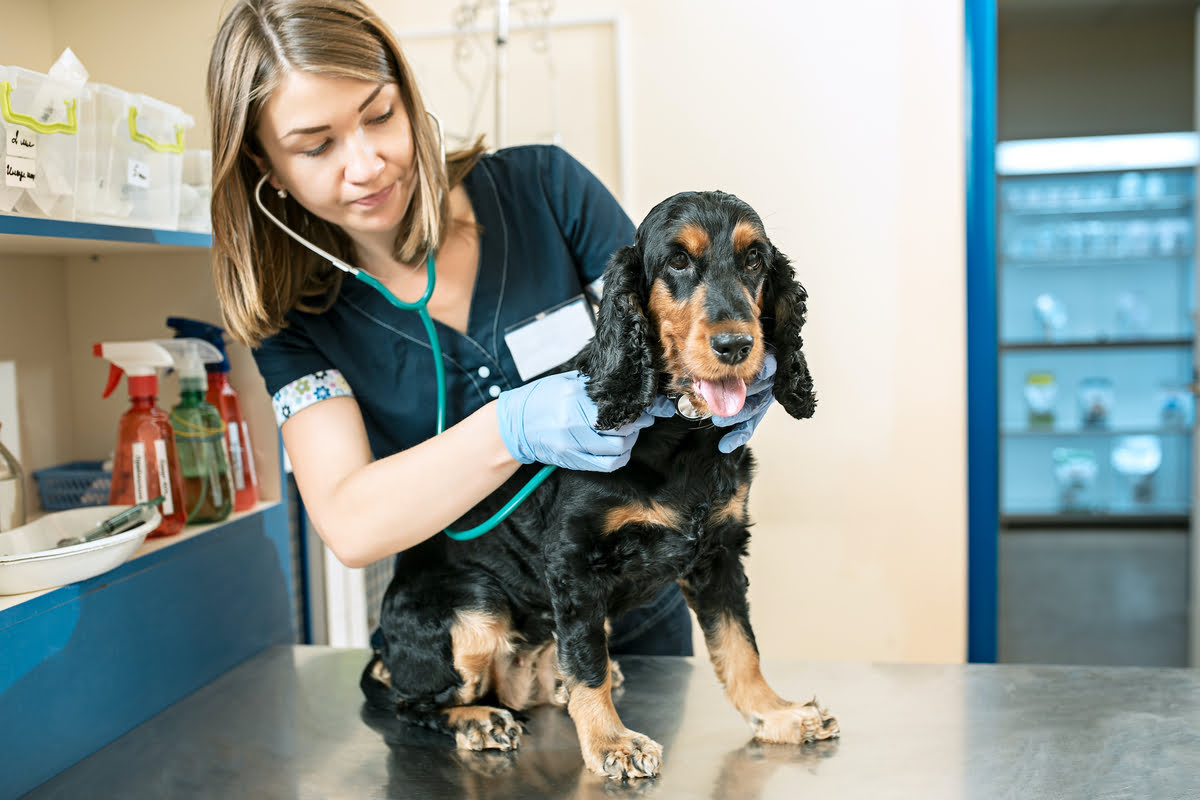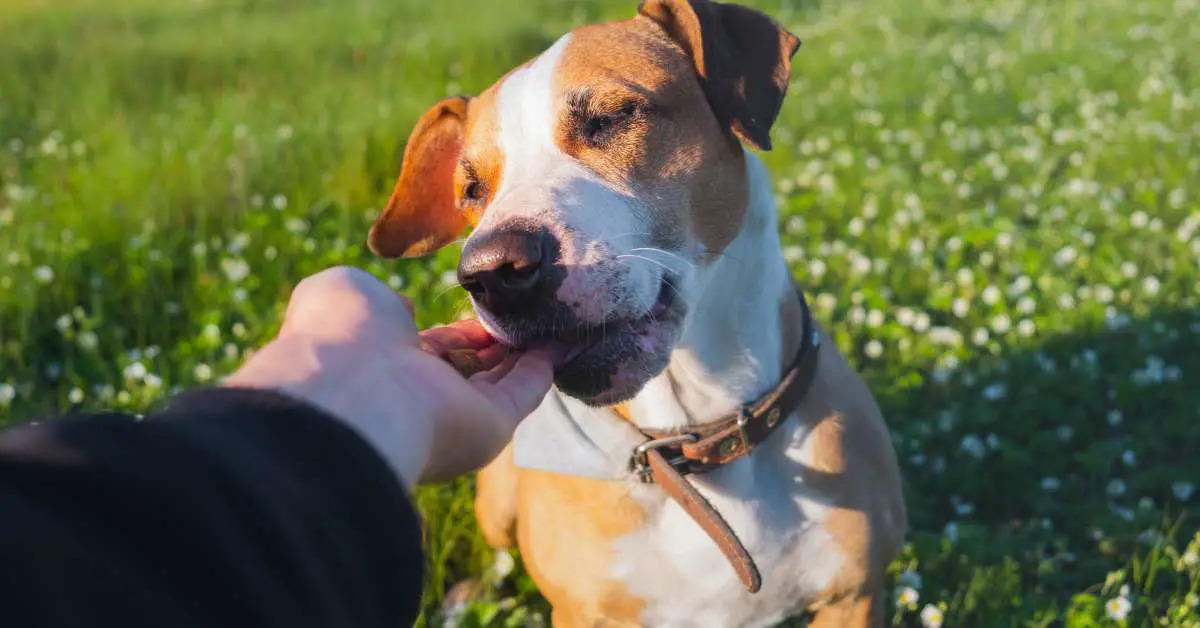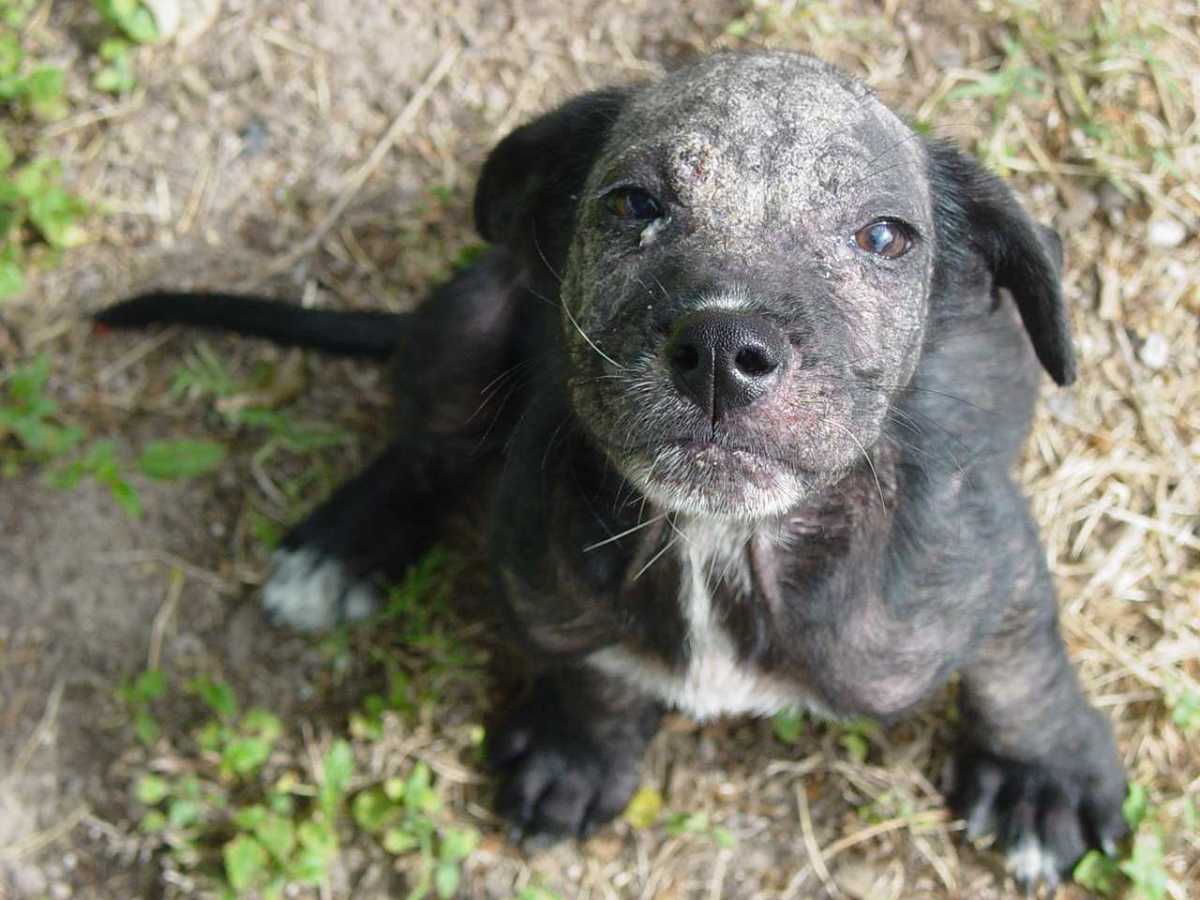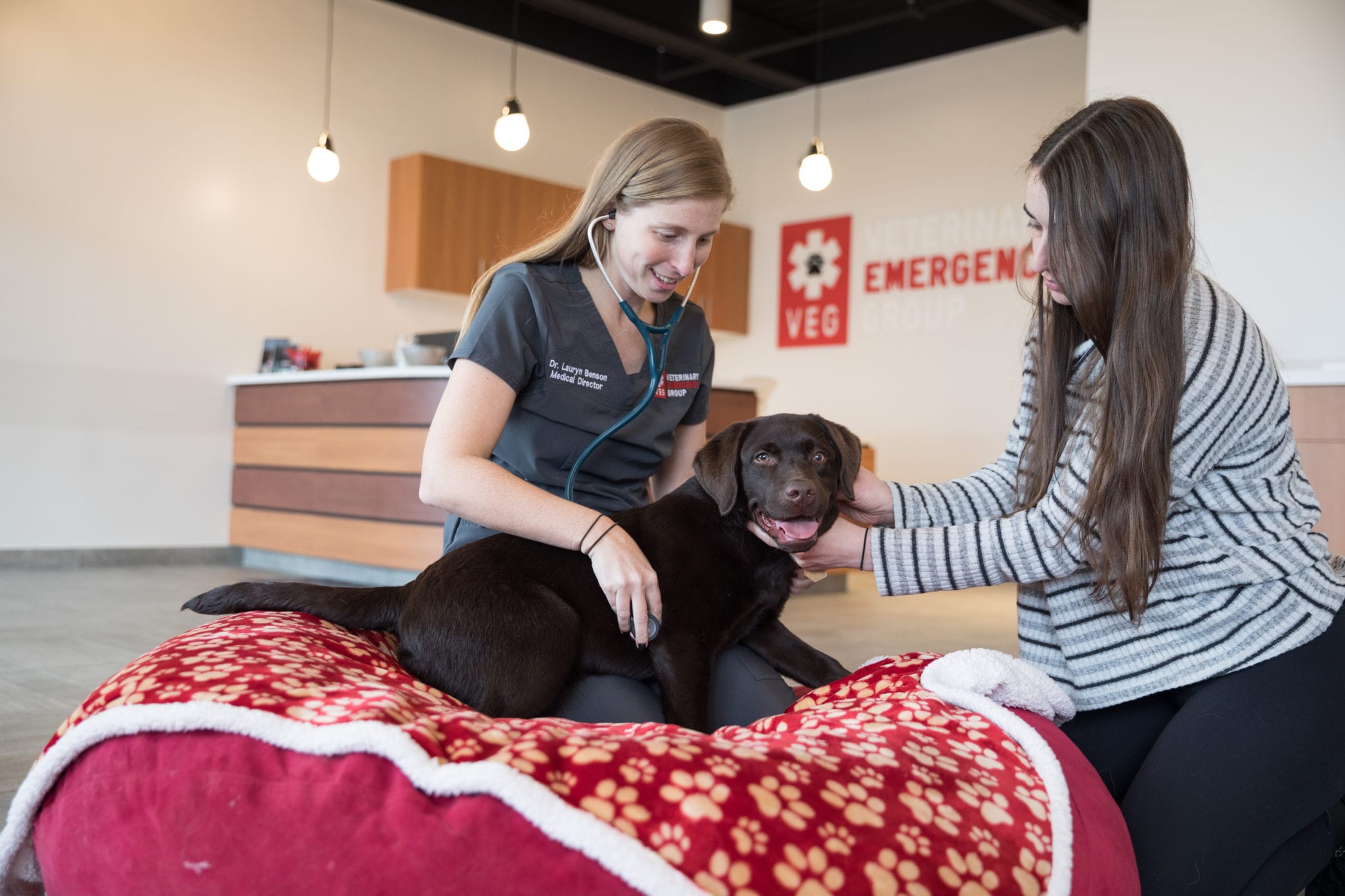Home>Health & Wellness>Common Health Issues>How To Treat Coccidia Parasite In Dogs


Common Health Issues
How To Treat Coccidia Parasite In Dogs
Published: February 7, 2024
Learn effective ways to treat coccidia parasite in dogs and prevent common health issues. Expert tips and advice for a healthy, happy pet.
(Many of the links in this article redirect to a specific reviewed product. Your purchase of these products through affiliate links helps to generate commission for Pawsomeoldies.com, at no extra cost. Learn more)
Table of Contents
Introduction
Coccidia parasite is a common health issue that affects dogs of all ages and breeds. This microscopic organism can cause significant discomfort and health complications for our beloved canine companions. As responsible pet owners, it's crucial to understand the nature of this parasite, its symptoms, and the available treatment options to ensure the well-being of our furry friends.
Coccidia infection, caused by single-celled organisms known as coccidia, primarily impacts the intestinal tract of dogs. These parasites can be found in the environment, particularly in areas frequented by dogs, such as parks, kennels, and communal living spaces. When ingested, either through contaminated food, water, or direct contact with infected feces, coccidia can multiply within the dog's intestines, leading to an array of health issues.
Understanding the implications of coccidia infection is essential for pet owners, as early detection and intervention can significantly improve the prognosis for affected dogs. By recognizing the symptoms and seeking prompt veterinary care, we can mitigate the impact of this parasite on our furry companions' health and well-being.
In the following sections, we will delve deeper into the intricacies of coccidia infection, exploring its symptoms, diagnostic methods, treatment options, and preventive measures. By gaining a comprehensive understanding of this common health issue, we can equip ourselves with the knowledge and tools necessary to safeguard our dogs from the detrimental effects of coccidia parasites.
Read more: How To Treat Dog Parasite Symptoms On Skin
Understanding Coccidia Parasite
Coccidia parasites are single-celled organisms that belong to the phylum Apicomplexa. These microscopic organisms, specifically from the genus Cystoisospora and Eimeria, are known to infect the intestinal tracts of various animals, including dogs. The most common species that affect dogs are Cystoisospora canis and Cystoisospora ohioensis.
These parasites have a complex life cycle, involving both sexual and asexual stages. When a dog ingests the infective stage of coccidia, typically found in contaminated soil, water, or feces, the parasites invade the cells lining the intestinal tract. Once inside the host's body, they undergo a series of reproductive stages, leading to the release of oocysts, which are the environmentally resistant stage of the parasite.
Coccidia oocysts are shed in the feces of infected dogs, contaminating the surrounding environment and serving as a source of infection for other animals. The oocysts can survive for extended periods in the environment, making it challenging to eradicate the parasite from shared spaces.
Infection with coccidia can occur through various routes, including direct ingestion of oocysts, consumption of contaminated food or water, or exposure to infected feces. Puppies and dogs with weakened immune systems are particularly susceptible to coccidia infection, as their immune responses may be insufficient to combat the parasites effectively.
Once inside the host's intestines, coccidia can cause damage to the intestinal lining, leading to inflammation, diarrhea, and potential nutrient malabsorption. The resulting symptoms can range from mild gastrointestinal upset to severe, life-threatening complications, particularly in young or immunocompromised dogs.
Understanding the nature of coccidia parasites is crucial for pet owners, as it enables them to implement preventive measures and seek timely veterinary care if their dogs show signs of infection. By recognizing the life cycle, transmission routes, and potential impact of coccidia parasites, pet owners can take proactive steps to protect their canine companions from this common health threat.
Symptoms of Coccidia Infection in Dogs
Coccidia infection in dogs can manifest through a range of symptoms, which may vary in severity depending on the extent of the infestation and the dog's overall health. It's essential for pet owners to be vigilant and recognize these signs, as early detection can facilitate prompt intervention and improved outcomes for affected dogs.
-
Diarrhea: One of the most common symptoms of coccidia infection is diarrhea, which may range from mild and intermittent to severe and persistent. The stool may appear watery, contain mucus, or even exhibit traces of blood in more severe cases.
-
Dehydration: Prolonged diarrhea resulting from coccidia infection can lead to dehydration in affected dogs. Pet owners should monitor their dogs for signs of decreased energy, sunken eyes, dry gums, and reduced skin elasticity, which are indicative of dehydration.
-
Weight Loss: Dogs suffering from coccidia infection may experience weight loss due to the combined effects of diarrhea, reduced appetite, and potential nutrient malabsorption caused by intestinal damage.
-
Lethargy: Infected dogs may exhibit lethargy or a lack of energy, appearing less active and engaged in their usual activities. This can be a result of the overall impact of the infection on their physical well-being.
-
Vomiting: In some cases, coccidia infection may lead to vomiting, further contributing to fluid and electrolyte imbalances in affected dogs.
-
Loss of Appetite: Dogs with coccidia infection may display a decreased interest in food, leading to reduced caloric intake and potential nutritional deficiencies.
-
Abdominal Discomfort: Infected dogs may show signs of abdominal discomfort, such as hunching, restlessness, or sensitivity when their abdomen is touched.
It's important to note that the severity and combination of these symptoms can vary among individual dogs. Additionally, puppies and dogs with weakened immune systems may experience more pronounced clinical signs, necessitating immediate veterinary attention.
By familiarizing themselves with these symptoms, pet owners can promptly seek veterinary care if their dogs exhibit any concerning signs, facilitating timely diagnosis and treatment of coccidia infection. Early intervention is crucial in mitigating the impact of this parasitic infestation and promoting the recovery and well-being of affected dogs.
Diagnosing Coccidia Infection
Accurate diagnosis of coccidia infection in dogs is essential for initiating timely treatment and preventing the progression of the disease. Veterinary professionals employ various diagnostic methods to confirm the presence of coccidia parasites and assess the extent of the infestation in affected dogs.
-
Fecal Examination: The primary diagnostic approach for coccidia infection involves analyzing a fecal sample to detect the presence of coccidia oocysts. Veterinary technicians or pathologists utilize specialized techniques, such as fecal flotation or fecal smears, to identify and quantify the oocysts under a microscope. This method allows for the visualization of coccidia oocysts, enabling the accurate diagnosis of the infection.
-
Clinical Assessment: In addition to fecal examination, veterinarians conduct a thorough clinical assessment of affected dogs. This involves evaluating the dog's medical history, including any previous instances of gastrointestinal issues or potential exposure to contaminated environments. Furthermore, the veterinarian examines the dog's overall health, focusing on specific symptoms associated with coccidia infection, such as diarrhea, dehydration, and weight loss. By correlating the clinical findings with the results of fecal examination, veterinarians can establish a comprehensive diagnosis of coccidia infection.
-
Diagnostic Testing: In cases where the clinical presentation and fecal examination results are inconclusive, veterinarians may recommend additional diagnostic tests to confirm coccidia infection. This may involve blood tests to assess the dog's immune response and overall health status. Additionally, advanced imaging techniques, such as abdominal ultrasound, can aid in evaluating the extent of intestinal damage and identifying potential complications associated with coccidia infestation.
-
Repeated Testing: Due to the intermittent shedding of coccidia oocysts in feces, veterinarians may recommend repeated fecal examinations to enhance diagnostic accuracy. Multiple fecal samples collected over several days can provide a more comprehensive understanding of the parasite load and aid in confirming the presence of coccidia infection, especially in cases where initial tests yield negative results.
By employing a combination of fecal examination, clinical assessment, and, if necessary, additional diagnostic tests, veterinarians can accurately diagnose coccidia infection in dogs. This precise diagnosis forms the foundation for implementing targeted treatment strategies and supportive care to alleviate the symptoms and promote the recovery of affected dogs. Early and accurate diagnosis is pivotal in preventing the potential complications of coccidia infestation and ensuring the well-being of canine patients.
Treatment Options for Coccidia Parasite
Upon confirming a diagnosis of coccidia infection in dogs, veterinarians devise comprehensive treatment plans aimed at eradicating the parasites, alleviating clinical symptoms, and supporting the affected dog's overall health. The treatment approach for coccidia parasite involves a combination of specific medications, supportive care, and environmental management to ensure the successful resolution of the infection.
Read more: How To Treat Cancer In Dogs
Medications
Veterinarians commonly prescribe medications known as coccidiostats to combat coccidia parasites effectively. These medications, such as sulfadimethoxine or trimethoprim-sulfonamide combinations, target the coccidia organisms within the dog's intestines, inhibiting their growth and promoting their elimination from the body. The prescribed dosage and duration of treatment are tailored to the individual dog's condition, taking into account factors such as the severity of the infection and the dog's overall health status.
Supportive Care
In addition to specific medications, supportive care plays a crucial role in managing coccidia infection in dogs. This may involve addressing dehydration through fluid therapy, as prolonged diarrhea can lead to significant fluid and electrolyte imbalances. Veterinarians may administer intravenous or subcutaneous fluids to rehydrate affected dogs and restore their electrolyte balance, facilitating their recovery and overall well-being.
Nutritional Support
Dogs suffering from coccidia infection may experience reduced appetite and weight loss, necessitating nutritional support to aid their recovery. Pet owners are advised to provide easily digestible, high-quality food to ensure that affected dogs receive essential nutrients during the recovery process. In some cases, veterinarians may recommend specific dietary supplements to address potential nutrient deficiencies and support the dog's immune system as it combats the coccidia parasites.
Environmental Management
To prevent re-infection and minimize the spread of coccidia parasites, thorough environmental management is essential. This involves cleaning and disinfecting the dog's living spaces, including bedding, crates, and outdoor areas, to eliminate any residual oocysts. Additionally, practicing good hygiene, such as promptly removing and disposing of feces, can help reduce the risk of coccidia transmission and safeguard the health of other dogs in the household or communal environments.
Read more: How To Get Rid Of A Parasite In Dogs
Follow-Up Monitoring
Following the initiation of treatment, veterinarians may recommend periodic follow-up appointments to monitor the dog's progress and assess the effectiveness of the prescribed interventions. This may involve repeat fecal examinations to confirm the clearance of coccidia parasites from the dog's system and ensure the successful resolution of the infection. By closely monitoring the dog's response to treatment, veterinarians can make any necessary adjustments to the management plan, further optimizing the dog's recovery.
By implementing a comprehensive treatment approach encompassing specific medications, supportive care, nutritional support, environmental management, and follow-up monitoring, veterinarians strive to effectively manage coccidia infection in dogs and promote the complete recovery of affected canine patients. This multifaceted treatment strategy addresses the various aspects of the infection, aiming to alleviate clinical symptoms, eliminate the parasites, and prevent re-infection, ultimately restoring the affected dog's health and well-being.
Preventing Coccidia Infection
Preventing coccidia infection in dogs is paramount for maintaining their health and well-being. By implementing proactive measures and adhering to sound hygiene practices, pet owners can significantly reduce the risk of coccidia infestation in their canine companions. Here are essential strategies to prevent coccidia infection:
-
Hygiene and Sanitation: Maintaining a clean and hygienic living environment for dogs is crucial in preventing coccidia infection. Regularly cleaning and disinfecting indoor and outdoor spaces, including kennels, crates, and bedding, helps eliminate coccidia oocysts that may be present in the environment. Prompt removal and proper disposal of feces also play a pivotal role in minimizing the spread of coccidia parasites.
-
Limiting Exposure to Contaminated Environments: Avoiding areas with known or suspected coccidia contamination can help reduce the risk of exposure. When visiting parks, communal dog spaces, or other areas where dogs congregate, pet owners should be mindful of potential sources of coccidia oocysts, such as feces or contaminated soil. Limiting direct contact with these environments can lower the likelihood of coccidia transmission.
-
Quarantine and Isolation: Introducing new dogs or puppies into the household warrants careful quarantine and isolation measures to prevent the potential spread of coccidia parasites. Separating newly acquired dogs from resident pets during an initial adjustment period allows for observation and, if necessary, fecal testing to ensure that the new additions are free from coccidia infection before integrating them into shared living spaces.
-
Proper Nutrition and Hydration: Providing dogs with a balanced diet and access to clean, fresh water supports their overall health and immune function, reducing the susceptibility to coccidia infection. Well-nourished and adequately hydrated dogs are better equipped to combat potential parasitic threats, emphasizing the importance of proper nutrition in preventive care.
-
Regular Veterinary Care: Scheduling routine veterinary examinations and adhering to recommended vaccination and deworming protocols are integral components of preventive healthcare for dogs. Veterinarians can provide guidance on parasite control measures, including preventive medications and fecal testing, to detect and address coccidia infection early on.
-
Educating Pet Owners: Educating pet owners about the risks of coccidia infection and the importance of preventive measures fosters a proactive approach to canine health. By raising awareness about the transmission routes and clinical implications of coccidia parasites, pet owners can make informed decisions and implement preventive strategies to safeguard their dogs' well-being.
By incorporating these preventive measures into their care routines, pet owners can create a supportive and protective environment for their dogs, minimizing the risk of coccidia infection and promoting a healthier, happier life for their beloved canine companions.
Conclusion
In conclusion, coccidia infection poses a significant health concern for dogs, necessitating a comprehensive understanding of the parasite, its symptoms, diagnostic approaches, treatment options, and preventive strategies. By recognizing the impact of coccidia parasites on canine health and well-being, pet owners can proactively safeguard their furry companions from the detrimental effects of this common health issue.
Understanding the nature of coccidia parasites, including their life cycle, transmission routes, and potential impact on dogs, empowers pet owners to implement preventive measures and seek timely veterinary care if their dogs show signs of infection. Early detection and intervention are pivotal in mitigating the impact of coccidia infestation and promoting the recovery of affected dogs.
The diverse array of symptoms associated with coccidia infection, ranging from diarrhea and dehydration to weight loss and lethargy, underscores the importance of vigilant monitoring and prompt veterinary attention. By familiarizing themselves with these symptoms, pet owners can facilitate early diagnosis and treatment, enhancing the prognosis for affected dogs.
Accurate diagnosis of coccidia infection is essential for initiating targeted treatment strategies and supportive care, emphasizing the significance of fecal examination, clinical assessment, and, if necessary, additional diagnostic testing. This precise diagnosis forms the foundation for implementing comprehensive treatment plans aimed at eradicating the parasites, alleviating clinical symptoms, and supporting the overall health of affected dogs.
The multifaceted treatment approach for coccidia infection encompasses specific medications, supportive care, nutritional support, environmental management, and follow-up monitoring, aiming to effectively manage the infection and promote the complete recovery of affected canine patients. By addressing the various aspects of the infection, veterinarians strive to alleviate clinical symptoms, eliminate the parasites, and prevent re-infection, ultimately restoring the affected dog's health and well-being.
Furthermore, preventive measures, including hygiene and sanitation practices, limiting exposure to contaminated environments, proper nutrition and hydration, regular veterinary care, and educating pet owners, play a pivotal role in minimizing the risk of coccidia infection in dogs. By incorporating these preventive measures into their care routines, pet owners can create a supportive and protective environment for their dogs, minimizing the risk of coccidia infection and promoting a healthier, happier life for their beloved canine companions.
In essence, by fostering awareness, implementing preventive strategies, and prioritizing early intervention and treatment, pet owners can effectively combat coccidia infection, ensuring the well-being and vitality of their canine companions. This proactive approach to canine health underscores the profound bond between humans and dogs, reflecting a commitment to providing the best possible care for our beloved four-legged friends.













